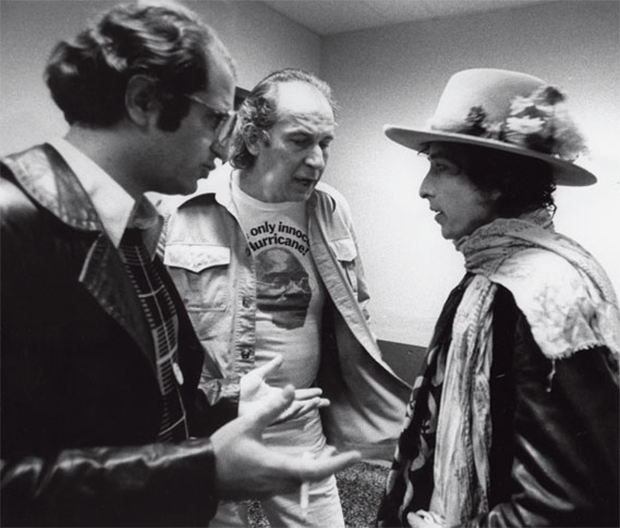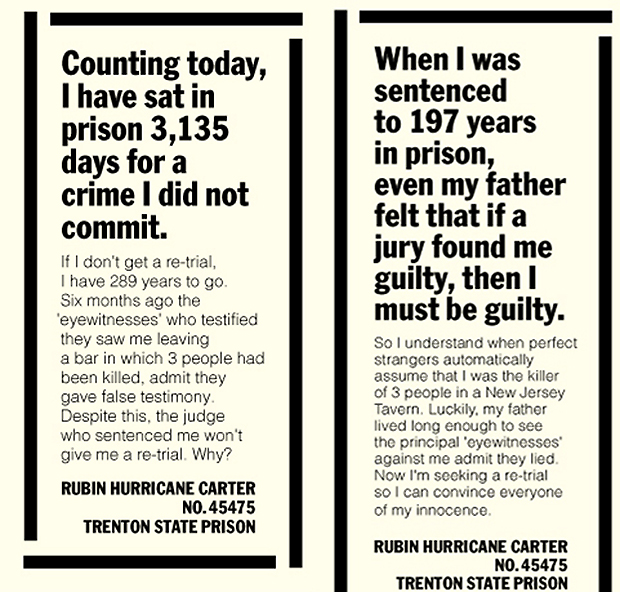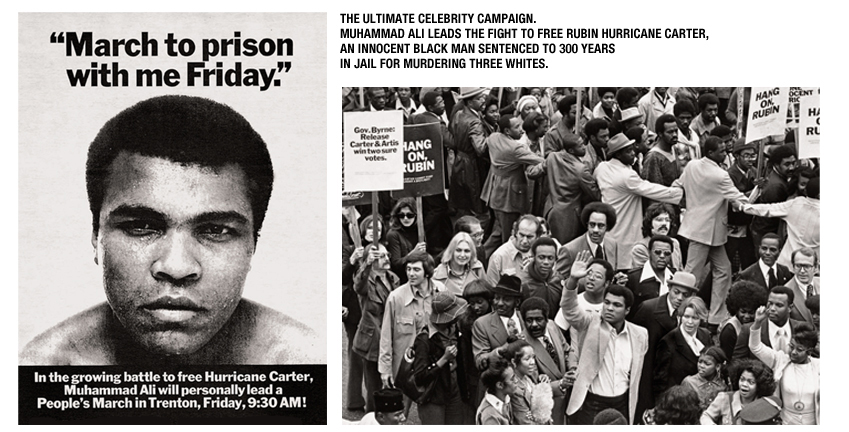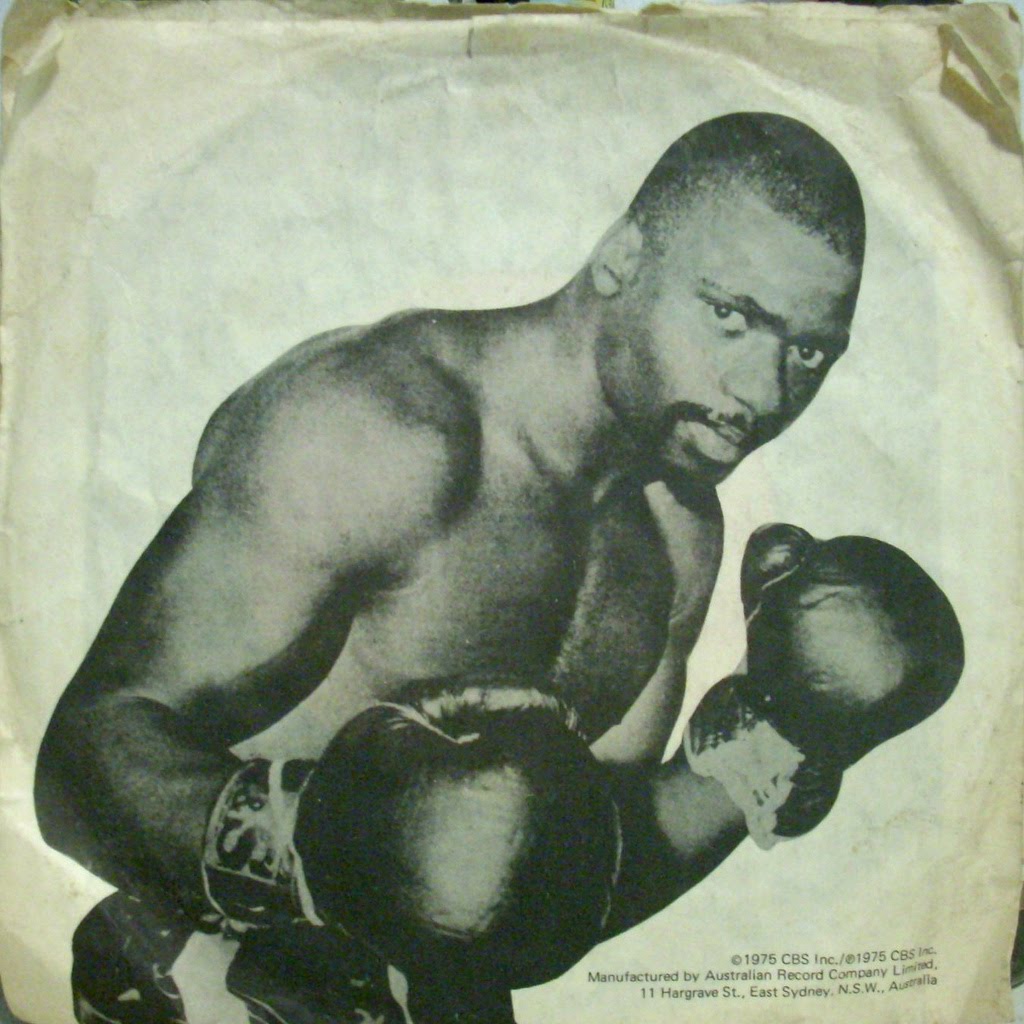
George Lois on Rubin ‘Hurricane’ Carter
The legendary ad man explains how he got Muhammad Ali and Bob Dylan to help free the falsely convicted boxer
Rubin ‘Hurricane’ Carter may have found fame as a world champion fighter, had he not been wrongly convicted of murder in 1966. Instead, The Hurricane became a cause célèbre during the mid 1970s, when Phaidon author and legendary Madison Avenue ad man, George Lois, organized a campaign to free the fighter. To mark Carter’s death a few days ago, we spoke to George about the boxer and his campaign to free him.
“I loved the way Rubin ‘Hurricane’ Carter fought," George told us. "He was a ferocious fighter, like a Mike Tyson in his weight class (middleweight). I saw him fight in person maybe four or five times. In 1966, he was arrested for murdering three whites in a Patterson, New Jersey bar. The Jersey cops needed somebody, and Rubin was a logical guy to go after. He had a shaved head, a Fu Manchu moustache and was very aggressive; he would talk back to cops. He and a young man by the name of John Artis were framed. They were so far from fitting the description of the killers it wasn’t funny.

"In 1975, someone got Carter’s autobiography, The Sixteenth Round, to me. I read the book and said ‘wow, this guy is as innocent as hell.’ I decided I was going to help. I’m an advertising guy; I’ll do some ads. I put together two, one-column ads, one to follow up the other. I went to the New York Times, the ads, and told them I wanted to run them in their newspaper. It took a couple of days of them arguing but they finally gave in. When they did, I said, ‘OK can you run it on page two?’
"Then I went to see Carter in prison. I had him read the ads and said I wanted to run them in two days. He looked at me as if I was totally crazy. He said yes, but I’m sure he thought I was full of shit. On Thursday morning the ads appeared and the shit hit the fan. Thousands of people around the country were reacting, but mostly the feedback was bad – ‘how do you support a convicted killer of three white people?’, things like that.

“I had shown the ad to Muhammad Ali. The two boxers knew each other, and Ali was like ‘wow, Rubin’s innocent?’ I told him that I’d like to use Ali’s name, to make him chairman of something I was calling the Hurricane Fund, to raise hell and give the governor of New Jersey a hard time. Ali said, ‘If you think he’s innocent I’m with you George.’
"I went to see Rubin again, and told him we were starting the Hurricane Fund, and that Muhammad was going to be its head. Again, he looked at me as if I was crazy. Then, me and a couple of my buddies – real sharp guys - got on the phones, and called celebrities all over the country, it took us about a week, four or five days, to gather names in support.
"We got Johnny Cash, Harry Belafonte, Don King, Gay Talese, Hank Aaron, George Plimpton, Burt Reynolds, Ed Koch, Barry White, and Don King. I can’t believe some of the people who gave us support. Then, about a month later, I spoke to another buddy of mine, Larry "Ratso" Sloman, a writer, who was on Bob Dylan’s Rolling Thunder Revue. I asked Larry to speak to Bob to see whether he would write a protest song.

"Before you knew it, I got an appointment to meet Bob up in Connecticut. Dylan had been reading about the case. I gave him a copy of Rubin’s book, and he went out to the jail a couple of days later. After that he said he would write a song. He even checked the lyrics with me.
"By then both the New Jersey State and the governor were being bombarded. When the song came out (November 1975) it was all over the radio, and Dylan was playing it at all his shows. Then I asked him ‘any chance of doing a concert for Rubin?’ "He listened to me for about ten minutes without saying a word and he said ‘I’ll do it on one condition: before I do the concert at Madison Square Gardens I have to do the concert in his prison.’
"Well, Rubin was in Trenton State Prison, a really old, horrible facility. When they heard about the concert, they moved him to a women’s prison with no bars, to make them look less barbaric. The pressure on the state was just incredible, we organised a march of 10,000 people led by Muhammad Ali, from the prison to the state house. We held this gigantic concert at Madison Square Gardens; we did the concert at the prison. Everything was going great, but Rubin wouldn’t accept a simple pardon – he thought that was wrong.
"He was freed pending a retrial. But then he lost control of himself and slapped a female friend – a terrible thing. So the state figured they could publicize it and not only retry him, but also reframe him. The witness that had recanted their statements from the first trail disappeared mysteriously. Eventually, he was freed in 1985, and all charges were dismissed in 1990. In the meantime, I lost a huge account, because the client said to me ‘stop working for the nigger or I’ll fire you’. It was a hardship, but it was worth it. He was a very spiritual guy; he didn’t do much with the Christian stuff, but he was real spiritual. So we did a good thing, with the help of Dylan and Muhammad Ali; he was an innocent man." For more on George Lois's life and work pick up a copy of Damn Good Advice (for people with talent!) here.